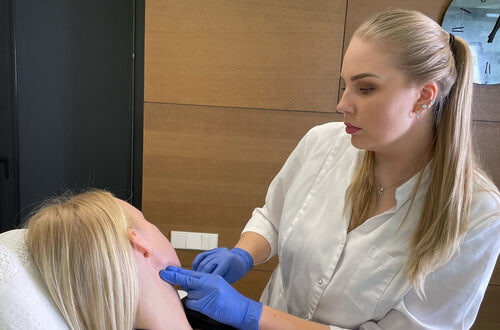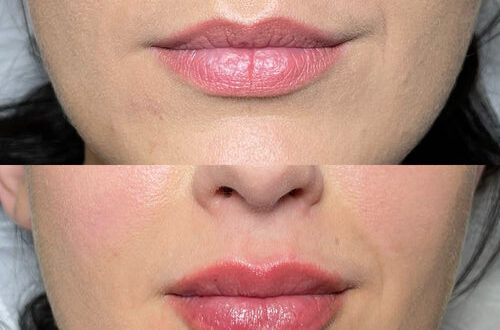Schedule a Dermal Filler Consultation with Dr. Laura Geige Now
Identifying Nasal Flaring
Types of Nasal Flaring
Nasal flaring, the widening of the nostrils during breathing, can indicate underlying issues related to airflow obstruction or respiratory distress.
Identifying nasal flaring often involves observing the outward movement of the nostrils when a person breathes. This is particularly noticeable during periods of exertion, stress, or illness.
Nasal flaring can be classified into various types based on its appearance and severity:
* **Mild Nasal Flaring:** The nostrils widen slightly during inhalation, but breathing appears relatively effortless.

* **Moderate Nasal Flaring:** The nostrils flare more noticeably during both inhalation and sometimes exhalation. Breathing may seem slightly labored.
* **Severe Nasal Flaring:** The nostrils significantly enlarge during breathing, and the individual exhibits clear signs of respiratory distress, such as rapid breathing, wheezing, or grunting.
Understanding the types and severity of nasal flaring can provide valuable insights into the nature of underlying respiratory problems. If you or someone you know experiences persistent nasal flaring, consulting a medical professional is essential for proper diagnosis and treatment.
Book a Dermal Filler Consultation at It’s Me and You Clinic with Dr. Laura Geige
Common Causes of Nasal Flaring
Nasal flaring refers to the widening of the nostrils during breathing, creating a noticeable outward movement of the nostrils. While it can occur in various situations, excessive or persistent nasal flaring often indicates an underlying issue that needs attention.
Here’s a breakdown of identifying nasal flaring and its common causes:
Identifying Nasal Flaring:
- Observe the nostrils during breathing: Look for widening or expansion when the individual inhales.
- Note the pattern: Is it consistent with each breath, or does it occur only during exertion?
- Consider severity: Is it a subtle outward movement or a dramatic flaring?
Common Causes of Nasal Flaring:
- Congestion: Inflammation and swelling in the nasal passages, often due to allergies, colds, or infections, can obstruct airflow. This forces the body to work harder, leading to flaring.
- Anatomical Abnormalities: Structural issues such as a deviated septum (a crooked partition between the nostrils) or nasal polyps (benign growths) can restrict airflow and cause flaring.
- Breathing Difficulties: Conditions like asthma, bronchitis, or sleep apnea can make breathing labored and trigger nasal flaring.
- Nasal Trauma: Injury to the nose can cause swelling and damage that affect airflow, leading to flaring.
- Foreign Object:** If something is lodged in the nose, it can obstruct air passage and necessitate wider nostril openings for breathing.
It’s important to consult a healthcare professional if nasal flaring is persistent, severe, or accompanied by other symptoms like difficulty breathing, snoring, or facial pain. They can accurately diagnose the underlying cause and recommend appropriate treatment options.
Addressing Underlying Issues
Allergies and Sinus Infections
Nasal flaring, where the nostrils widen during breathing, can be a symptom of underlying issues that need to be addressed. It’s important to understand the potential causes before attempting any remedies.
One common culprit is allergies. Allergic reactions cause inflammation in the nasal passages, leading to congestion and the need to breathe through wider nostrils. Identifying and avoiding allergens like pollen, dust mites, or pet dander can significantly reduce flaring.
Sinus infections, another frequent cause, involve inflammation of the sinus cavities, again resulting in blocked airways and the characteristic flaring. Treatment for sinus infections usually involves antibiotics prescribed by a doctor, alongside decongestants to relieve pressure and congestion.
Beyond allergies and sinus issues, nasal flaring can also stem from anatomical factors like a deviated septum or enlarged adenoids. These structural problems can obstruct airflow and necessitate medical intervention. A consultation with an ear, nose, and throat specialist (ENT) is recommended for proper diagnosis and treatment options in these cases.
It’s crucial to remember that nasal flaring isn’t always a cause for alarm, but if it persists or is accompanied by other symptoms like facial pain, headaches, fever, or difficulty breathing, seeking medical advice is essential.
Anatomical Deviations
Nasal flaring, characterized by nostrils widening during breathing, can be a sign of underlying respiratory issues or anatomical deviations.
Addressing the root cause is crucial for effectively treating nasal flaring. If the condition stems from a blocked nose due to congestion, allergies, or a deviated septum, these factors need to be addressed first.
Common underlying issues contributing to nasal flaring include:
- Allergies: Allergic rhinitis can cause inflammation and swelling in the nasal passages, leading to obstruction and flaring.
- Congestion: Colds, infections, or sinus problems can produce mucus buildup, narrowing the airways and forcing nostrils to open wider for airflow.
- Deviated Septum: A crooked nasal septum (the wall separating the nostrils) can impede air passage, causing one nostril to be more obstructed than the other.
- Nasal Polyps: Benign growths in the lining of the nose or sinuses can block airflow and contribute to flaring.
- Enlarged Turbinates:** The turbinates are bony structures that help warm and humidify air. Their enlargement, often due to allergies or infections, can obstruct nasal passages.
- Anatomical Variations:** Some individuals may have naturally wider nostrils or a flatter nasal bridge, predisposing them to flaring even without underlying issues.
Anatomical deviations, like those mentioned above, may require medical intervention for correction.
Treatment options for nasal flaring often involve addressing the specific underlying cause. For instance:
- Allergies: Antihistamines, decongestants, or nasal corticosteroids can help reduce inflammation and congestion.
- Congestion: Saline nasal sprays or rinses can clear mucus buildup. Decongestants might also be recommended temporarily.
- Deviated Septum: Septoplasty, a surgical procedure to straighten the septum, is often necessary for significant deviations.
- Nasal Polyps: Surgical removal of polyps may be required if they are causing persistent blockage.
In cases where anatomical variations contribute to nasal flaring, surgical rhinoplasty (nose job) can alter the structure of the nose, potentially reducing flaring. However, this is a more cosmetic approach and not always medically necessary.
It’s important to consult with a healthcare professional, preferably an otolaryngologist (ENT doctor), for a thorough evaluation and personalized treatment plan to address nasal flaring effectively. They can determine the underlying cause and recommend the most appropriate course of action.
Sleep Apnea
Nasal flaring, the widening of the nostrils during breathing, is often a symptom rather than a standalone condition.
To address *nasal flaring*, it’s crucial to identify and treat the underlying issue causing it.
A common culprit is *sleep apnea*. This disorder involves repeated pauses in breathing during sleep, forcing the body to gasp for air, which often manifests as nasal flaring.
*Sleep apnea* can be classified into several types:
-
Obstructive sleep apnea (OSA): The most common type, where the airway becomes blocked due to relaxed throat muscles.
-
Central sleep apnea (CSA): Occurs when the brain fails to send signals to the breathing muscles.
-
Complex sleep apnea: A combination of OSA and CSA.
Other potential causes for nasal flaring include:
-
*Nasal congestion*: Inflammation or blockage in the nasal passages can restrict airflow.
-
*Allergies*: Allergic reactions can lead to nasal swelling and congestion.
-
*Deviated septum*: A structural abnormality in the nasal septum, dividing the nose, can obstruct airflow.
-
*Enlarged adenoids: Swelling of the adenoids (lymphoid tissue in the back of the throat) common in children can restrict breathing.*
-
Other *respiratory conditions:* Asthma, chronic obstructive pulmonary disease (COPD), and cystic fibrosis can also contribute.
Addressing nasal flaring effectively requires a thorough evaluation by a healthcare professional to determine the underlying cause. Treatment plans are tailored to address the specific diagnosis.
Lifestyle Modifications and Therapies
Nasal Strips and Dilators
Nasal flaring occurs when the nostrils widen excessively during inhalation. This often signals difficulty breathing through the nose, usually due to congestion or obstruction.
Lifestyle modifications can sometimes help alleviate nasal flaring by addressing underlying causes. These include:
**Environmental Factors:**
Avoiding allergens like pollen and dust mites.
Maintaining a humidified environment, especially during dry months.
Using air purifiers to reduce airborne irritants.
**Nasal Hygiene:**
Regularly rinsing the nasal passages with saline solution can help clear mucus and debris.
Avoiding nasal sprays, which can lead to rebound congestion.
**Sleep Habits:**
Elevating the head of the bed can improve nasal airflow during sleep.
**Medical Therapies:**
Get Started with Dermal Fillers – Book with Dr. Laura Geige
If lifestyle changes are insufficient, medical therapies may be necessary. These include:
Antihistamines for allergies.
Decongestants to reduce swelling.
Nasal corticosteroids to reduce inflammation.
Oral or inhaled steroids for severe cases.
**Nasal Strips and Dilators:**
Nasal strips are adhesive patches that widen the nostrils, making it easier to breathe.
They can provide temporary relief for mild to moderate nasal congestion. Nasal dilators are similar devices, but they are inserted into the nostrils.
Both strips and dilators can be helpful for occasional congestion or during activities such as exercise.
Humidifiers and Saline Rinses
Nasal flaring, where the nostrils widen excessively during breathing, often signals an underlying respiratory issue.
It’s crucial to consult a healthcare professional for accurate diagnosis and treatment. Nasal flaring can result from allergies, infections, structural abnormalities, or medical conditions like asthma or chronic obstructive pulmonary disease (COPD).
**Lifestyle Modifications** can play a supportive role in managing nasal flaring:
* **Identify and Avoid Allergens:** Keep your living environment clean, dust regularly, use hypoallergenic bedding, and minimize contact with known allergens like pollen or pet dander.
* **Maintain Good Hydration:** Drinking plenty of fluids helps thin mucus, making it easier to drain and reducing nasal congestion.
* **Use a Saline Rinse:** Rinsing your nasal passages with a saline solution can clear out irritants, allergens, and mucus, improving airflow.
**Humidifiers** can be beneficial in dry environments or during allergy season:
* They add moisture to the air, making it less irritating to nasal passages and potentially reducing swelling.
* Choose a cool-mist humidifier as warm-mist humidifiers pose a burn risk.
**Other Therapies** your doctor might recommend include:
* Decongestants (oral or nasal sprays) to temporarily reduce inflammation and swelling.
* **Antihistamines** to block the action of histamine, which is involved in allergic reactions.
* **Steroid Nasal Sprays**: To reduce inflammation long-term for chronic conditions.
Always follow your doctor’s instructions carefully when using any medications or therapies. If nasal flaring persists despite these measures, seek further medical evaluation to rule out serious underlying conditions.
Breathing Exercises
Nasal flaring, characterized by noticeable widening of the nostrils during breathing, often indicates difficulty breathing through the nose. This can be caused by a variety of factors, including nasal obstruction from congestion, allergies, deviated septum, or anatomical abnormalities.
Lifestyle modifications and therapies aim to address underlying causes and improve nasal airflow, thus reducing or eliminating nasal flaring.
Lifestyle Modifications:
-
Humidification: Dry air can irritate nasal passages, exacerbating inflammation and congestion. Using a humidifier or taking warm showers can help add moisture to the air, easing breathing.
-
Nasal Rinse: Regularly rinsing your nasal passages with saline solution (salt water) helps remove mucus, allergens, and irritants, clearing airways and reducing congestion.
-
Avoidance of Triggers: Identifying and avoiding triggers for allergies or sensitivities can significantly improve nasal airflow. Common triggers include pollen, dust mites, pet dander, and smoke.
-
Hydration: Drinking plenty of fluids helps thin mucus, making it easier to drain from the nose.
-
Sleep Posture: Elevating your head while sleeping can improve drainage and reduce congestion overnight.
Therapies:
-
Nasal Steroids: These medications, available as nasal sprays or rinses, reduce inflammation in the nasal passages, relieving congestion and improving airflow.
-
Antihistamines: If allergies contribute to nasal flaring, antihistamines can block histamine release, reducing symptoms like sneezing, runny nose, and congestion.
-
Decongestants: These medications help shrink swollen tissues in the nasal passages, providing temporary relief from congestion. However, long-term use can lead to rebound congestion.
-
Surgery: In cases of severe structural abnormalities, such as a deviated septum or nasal polyps, surgery may be necessary to correct the issue and improve airflow.
**Breathing Exercises:** Certain breathing techniques can help strengthen respiratory muscles and improve airflow. Try these:
-
Diaphragmatic Breathing: Breathe deeply into your abdomen, expanding your belly rather than just your chest. This engages the diaphragm, a major muscle involved in breathing.
-
Pursed-Lip Breathing: Inhale slowly through your nose and exhale slowly through pursed lips as if you were whistling. This helps to control airflow and improve oxygen uptake.
If nasal flaring persists despite lifestyle modifications and therapies, consult a healthcare professional to determine the underlying cause and receive appropriate medical advice.
Madison Art Therapy Fashionably Balanced James Martin Live Divine Magazine Fringe Beverly Hills Hopeless Book
- Lip Flip Treatment Near Wallington, Surrey - December 21, 2024
- How Do You Fix Nasal Flaring? - December 14, 2024
- How To Find High-Quality CBD Gummies In The UK Market - December 8, 2024


